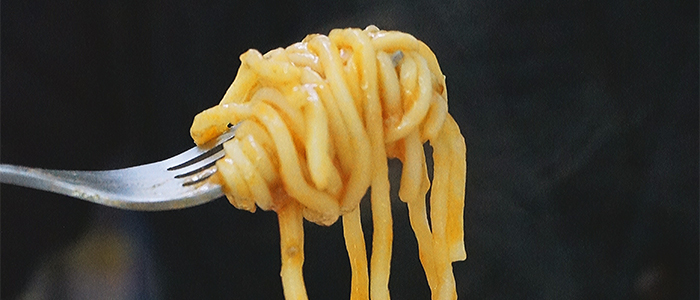
The wide array of ways to prepare a meal can confuse even the most seasoned of chefs, so we’ve decided to take a look at some regularly used methods and unearth the meaning behind them
So if your scratching your head wondering about what the heck a recipe means then here’s some of the most common cooking terms demystified directly for your reading pleasure.
Al Dente

At this point, we’re pretty sure that most people will know what Al Dente means, but in the interest of being thorough we are including it in our list.
Translated directly from Italian, it means ‘to the tooth’.
When food is cooked ‘Al Dente’ it’s cooked to the point where it is still firm to the bite, but not soft.
It’s how most pasta is supposed to be served, but personal preference is an issue here, but pasta cooked in this way has a lower glycemic index than pasta that is cooked until soft.
When cooking standard commercial pasta, the al dente phase occurs right after the white of the pasta centre disappears.
Bain Marie
A ‘Water bath’, used to cook more delicate foods such as custards and sauces gently, at a constant low temperature.
You can buy double saucepans or simply use a heatproof bowl over a pan of simmering water, making sure the bottom of the bowl sits higher than the water level and doesn’t come into contact with it.
An oven bain marie can be made by placing the baking dish in an oven tin containing hot water up to halfway.
Broil
Simply put, broiling is cooking food directly under high heat and not to be confused with grilling.
En croote
Literally ‘in crust’, used to describe an item of food, such as a piece of salmon of chicken, that has been cooked in pastry.
Escalope
Thin slice of meat, usually pork, turkey or veal, cut from the top of the leg and typically pan-fried.
Fillet
Bird breasts and sides of fish which have been boned, but also the undercut of a loin of beef, lamb or pork.
Folding In
Using a cutting and folding motion rather than stirring or beating to combine a whisked or creamed mixture in order to retain lightness.
Usually done with a large metal spoon or plastic-bladed spatula.
Frosting
Decorating leaves or flowers with a fine layer of sugar but also an American term for cake icing.
Julienne
The act of cutting an item of food into long, thin, matchstick style strips.
Ideal for salad foods and often used as a way of presenting foods rather than as a taste enhancing method of preparing food.
Reduce
Fast boiling stock or other cooking liquids in an uncovered pan so that water evaporates, giving a more concentrated flavour to the remaining liquid.
Saute
The term ‘saute’ actually means ‘to jump’ in French and refers to the constant motion of food in the pan, either by shaking or stirring.
Usually requires some oil, fat or butter and a hot pan to achieve perfectly sautéed food.
Souse
Pickling food, particularly fish, in spiced vinegar.
Suet
A hard animal fat used in pastry and steamed puddings, recently fallen out of favour as vegetarian alternatives are available.
Temper
The method used to stabilise certain food products by mixing a small amount of a hot ingredient into a cold ingredient before adding them all together.
A good example of this is when cream is added to soup; with the cold cream being added slowly whilst whisked to ensure that it doesn’t curdle.
Hopefully, we haven’t insulted your intelligence too much or maybe we’ve unearthed a few common cooking terms you were completely unaware of!
Either way, we’re hopeful that this has helped you get your head around a few of the more confusing bits of running a commercial kitchen.
Until next time!
